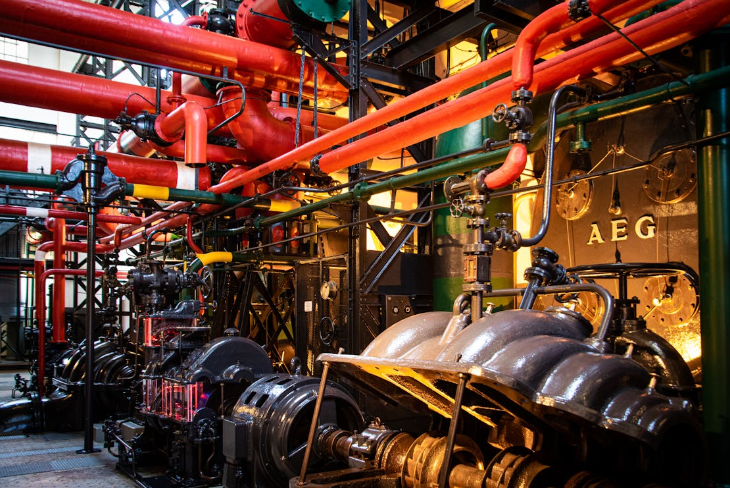When it comes to oil and gas operations, making the right decisions can significantly impact profitability and efficiency. One critical element in these operations is the selection of pumps. The choice of pump affects operational efficiency, capital investment, and maintenance costs. Understanding the financial factors that guide this selection process is vital for managers and engineers alike. By considering these aspects, companies can optimize pump performance while controlling costs, allowing them to stay competitive in this demanding industry.
Initial Capital Expenditure
Choosing a pump involves a careful assessment of initial capital expenditure. The upfront costs encompass everything from the pump itself to installation expenses. Pumps vary widely in price based on material, capacity, and design. Understanding the complete financial layout, including ancillary systems, is crucial. A cheaper pump might save money initially, but it could lead to higher operational costs later on.
Evaluating the total cost of ownership over the pump’s lifecycle offers a clearer picture. Companies must forecast operating costs, including energy consumption, which can shift the financial burden to operating expenses later. Often, investing in a higher-quality pump from the outset can yield better long-term savings and reliability. Companies must balance this initial investment against future savings and benefits.
Operational Efficiency and Reliability
Operational efficiency directly affects a company’s bottom line by influencing factors such as throughput and downtime. A pump that operates well under the specified conditions contributes to the productivity of oil and gas operations. Conversely, unreliable pumps can lead to costly interruptions, affecting project timelines and revenue. Selecting pumps with proven efficiency ratings means fewer resources spent on energy and maintenance.
Understanding the flow rates and operational demands specific to the site will help managers determine which pumps are the most efficient. Companies like DAE Pumps provide insights into which products best fit specific scenarios. Integrating quality pumps into the system supports performance and leads to cost savings. Investing in reliable pumps can mitigate risks associated with downtime, making them a financially sound choice for operations.
Maintenance and Lifespan Considerations
Another financial factor is the maintenance and expected lifespan of a pump. Regular maintenance is important to ensure pumps function optimally, which in turn impacts operational costs. A pump with lower maintenance can significantly reduce ongoing costs over its operational life. Investing in pumps designed for longevity can minimize replacements and repairs. Pumps with longer lifespans typically have higher initial costs but can prove to be more economical in the long run.
Companies need to weigh the projected maintenance costs alongside purchase expenses. By aligning maintenance needs with operational schedules, managers can better anticipate costs. A proactive maintenance program extends pump life and highlights potential failures before they escalate into expensive issues. Evaluating warranty provisions can provide insight into a pump’s reliability and long-term investment value.
Energy Consumption and Sustainability
Energy consumption is a critical financial factor in pump selection. High-energy pumps can inflate operational costs and impact environmental sustainability. As sustainability becomes increasingly relevant, many companies are investing in more energy-efficient technologies. Pump efficiency can directly correlate with energy usage, meaning selecting the right pump can significantly reduce consumption costs.
Industrial sectors are under pressure to minimize their carbon footprints, influencing purchasing decisions. Regulatory requirements related to emissions and energy efficiency affect pump specifications. A more energy-efficient pump can provide savings that bolster the return on investment. Understanding energy demands and sustainability practices can inform better choices in pump selection. This alignment supports both financial objectives and environmental responsibilities.
Market Trends and Economic Conditions
Market conditions and economic trends play pivotal roles in pump selection for oil and gas operations. Fluctuating oil prices directly influence budgeting and financial planning. The state of the economy can shift demand and operational capabilities, compelling companies to adapt their pump selection accordingly.
When prices are high, there may be greater capital expenditures on high-quality pumps. In a downturn, cost considerations can prioritize less expensive options. Understanding market dynamics allows companies to make informed decisions about their resources.
Financing Options
Various financing options are available, influencing how companies approach pump selection. Without adequate funding, a superior pump may remain out of reach, irrespective of its operational advantages. Financial institutions offer loans and leases for significant equipment purchases, allowing companies to allocate resources effectively. Flexible financing can help organizations manage cash flow while still investing in quality pumps.
Evaluating total financing costs, including interest, is important in making financially sound decisions. Some manufacturers offer payment plans that can ease the burden of upfront costs. Considering financing options is vital to ensure that the selection of pumps aligns with business strategies and financial health. Companies must assess the impact of different financing methods on their ongoing operational budget.
Carrying out in-depth research on multiple financial factors ensures that companies choose pumps that align effectively with their operational requirements while optimizing costs. Financial planning in the context of pump selection supports long-term stability and productivity in oil and gas operations.
Sujan Pariyar is an internationally accomplished writer and entrepreneur, with his work featured in various renowned international magazines. Known for his innovative ideas and compelling storytelling, Sujan continues to inspire and engage audiences around the world.
